MSI Z97 Guard-Pro Review: Entry Level Z97 at $110
by Ian Cutress on August 20, 2014 6:00 AM EST- Posted in
- Motherboards
- Intel
- MSI
- Z97
Gaming Benchmarks
With the PCIe layout of the MSI Z97 Guard-Pro using PCIe 3.0 x16 with a single PCIe 2.0 x4 slot, SLI is not possible. NVIDIA require a minimum of 8 lanes per GPU, and will not certify any product that does not meet this specification. This also means MSI does not have to pay license fees, and brings the cost of the motherboard down. However, the Z97 Guard-Pro does support Crossfire, but that PCIe 2.0 x4 has a low amount of bandwidth. In the past when we have added a 2nd/3rd AMD card at that bandwidth, the frame rate increase never really justified the cost of the card unless it was a title like Sleeping Dogs that tended to be bandwidth agnostic.
F1 2013
First up is F1 2013 by Codemasters. I am a big Formula 1 fan in my spare time, and nothing makes me happier than carving up the field in a Caterham, waving to the Red Bulls as I drive by (because I play on easy and take shortcuts). F1 2013 uses the EGO Engine, and like other Codemasters games ends up being very playable on old hardware quite easily. In order to beef up the benchmark a bit, we devised the following scenario for the benchmark mode: one lap of Spa-Francorchamps in the heavy wet, the benchmark follows Jenson Button in the McLaren who starts on the grid in 22nd place, with the field made up of 11 Williams cars, 5 Marussia and 5 Caterham in that order. This puts emphasis on the CPU to handle the AI in the wet, and allows for a good amount of overtaking during the automated benchmark. We test at 1920x1080 on Ultra graphical settings.
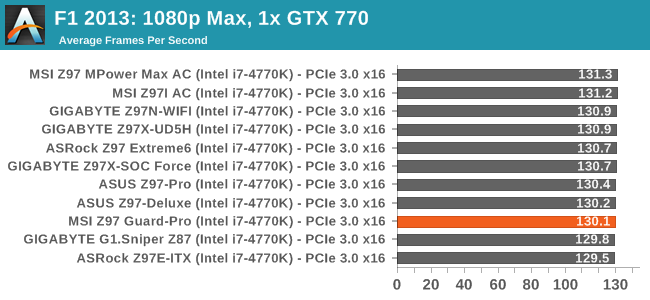
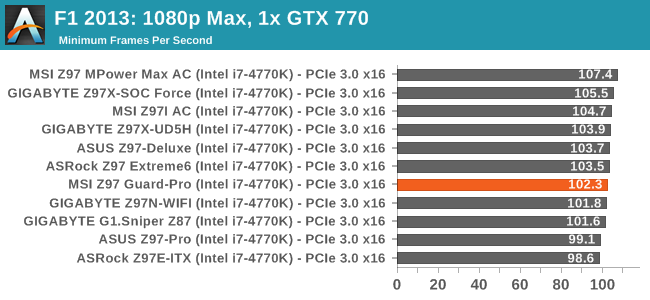
Bioshock Infinite
Bioshock Infinite was Zero Punctuation’s Game of the Year for 2013, uses the Unreal Engine 3, and is designed to scale with both cores and graphical prowess. We test the benchmark using the Adrenaline benchmark tool and the Xtreme (1920x1080, Maximum) performance setting, noting down the average frame rates and the minimum frame rates.
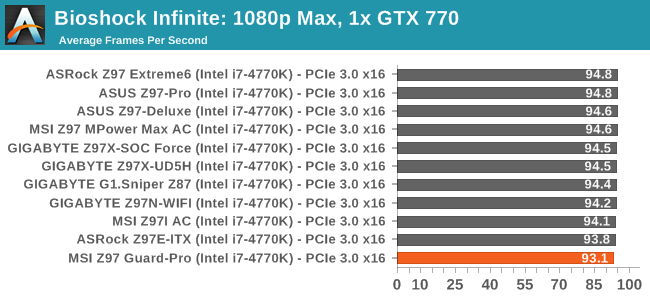
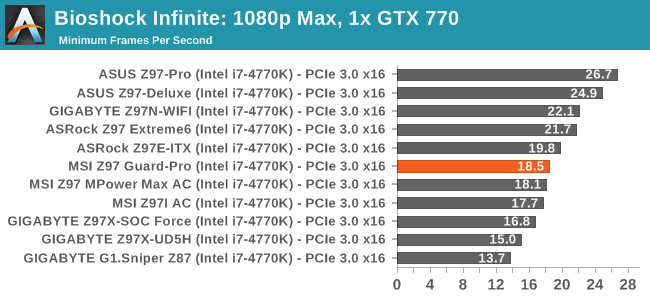
Tomb Raider
The next benchmark in our test is Tomb Raider. Tomb Raider is an AMD optimized game, lauded for its use of TressFX creating dynamic hair to increase the immersion in game. Tomb Raider uses a modified version of the Crystal Engine, and enjoys raw horsepower. We test the benchmark using the Adrenaline benchmark tool and the Xtreme (1920x1080, Maximum) performance setting, noting down the average frame rates and the minimum frame rates.
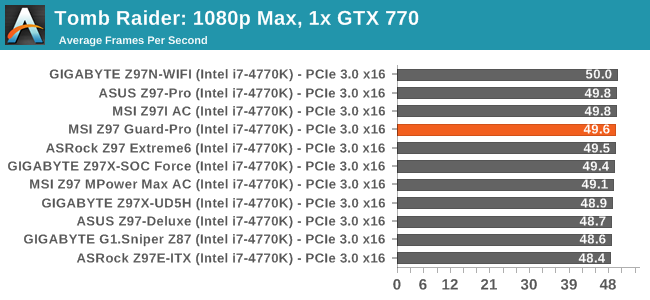
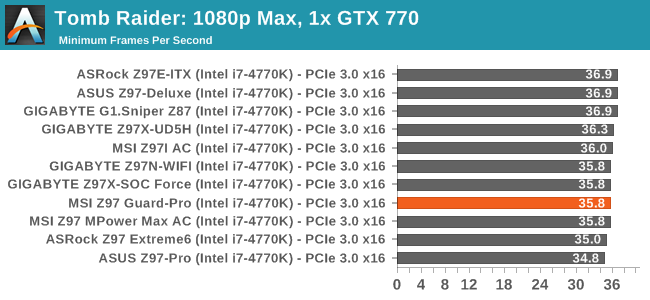
Sleeping Dogs
Sleeping Dogs is a benchmarking wet dream – a highly complex benchmark that can bring the toughest setup and high resolutions down into single figures. Having an extreme SSAO setting can do that, but at the right settings Sleeping Dogs is highly playable and enjoyable. We run the basic benchmark program laid out in the Adrenaline benchmark tool, and the Xtreme (1920x1080, Maximum) performance setting, noting down the average frame rates and the minimum frame rates.

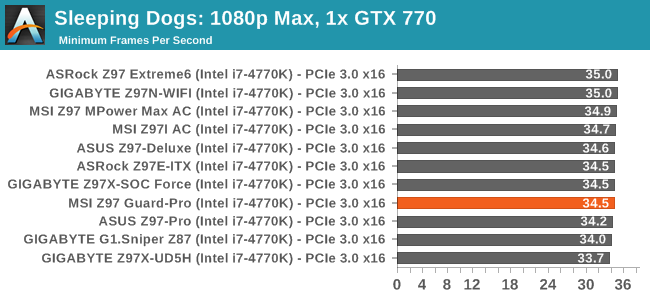
Battlefield 4
The EA/DICE series that has taken countless hours of my life away is back for another iteration, using the Frostbite 3 engine. AMD is also piling its resources into BF4 with the new Mantle API for developers, designed to cut the time required for the CPU to dispatch commands to the graphical sub-system. For our test we use the in-game benchmarking tools and record the frame time for the first ~70 seconds of the Tashgar single player mission, which is an on-rails generation of and rendering of objects and textures. We test at 1920x1080 at Ultra settings.
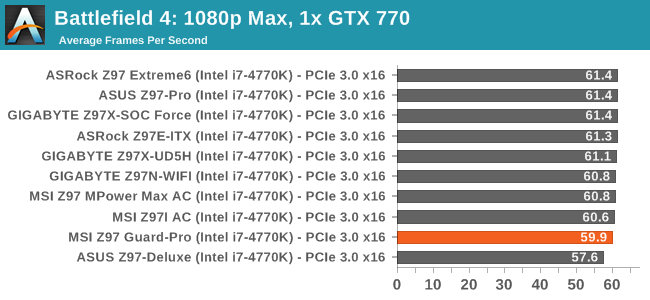



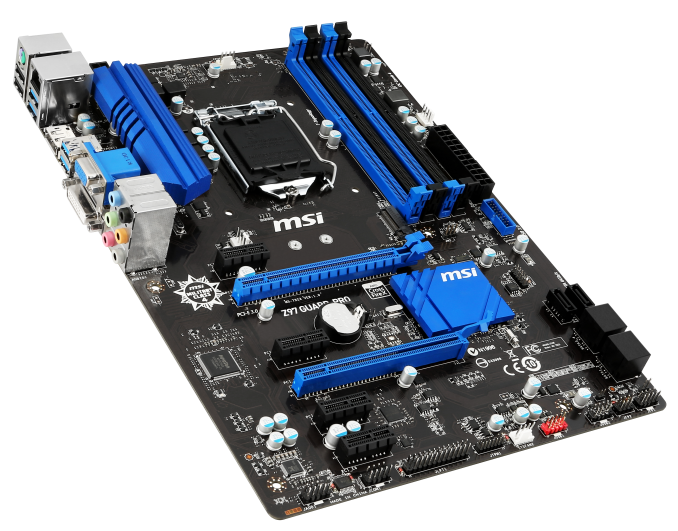













41 Comments
View All Comments
spugm1r3 - Wednesday, August 20, 2014 - link
http://www.legitreviews.com/intel-pentium-g3258-du...That shows a pretty robust selection of recent AAA titles faring as well on a Pentium as they do on an i7. Not all 2014 games are multithreaded. In fact, a vast majority aren't utilizing the resources offered by higher end processors. My point is, as long as Crysis or RTS games like Civ5 aren't your mainstays, invest the extra dollars where it counts.
Flunk - Wednesday, August 20, 2014 - link
Some of the benchmarks you linked to are as much as 40% slower on the overclocked Pentium, that's not what most people would call "on par". You're also discounting the fact that the 4770K overclocked would perform significantly better (Apples to apples here, if we've otherclocking we need to do it to both chips).The Pentium AE is a good low-end deal that will do for a lot of games, add in a mid-range GPU like a Radeon 270x or 280x and you've got a lot of performance for the buck. But it isn't comparable to even an overclocked i5 performance wise.
hojnikb - Wednesday, August 20, 2014 - link
If you want price/performance for games, then you either get athlon 750/760K, fx6300, i3 or i5.Everything else makes little sense and its a waste of money.
PentiumK and a z97 only makes sense if you're buying a stopgap system, that will soon get a better CPU. Buying pentiumK for longterm and expection to perform great is just crazy. FFS, its a lowend 2 core cpu.
DanNeely - Wednesday, August 20, 2014 - link
None of the benches they showed that actually matter are. No one uses a high end GPU to play at low quality settings and >200 FPS. That sort of BOGO benching to try and show CPU differences has been as stupid as it is common for a number of years. The ones at realistic GPU settings (1080p/max) were all within a few FPS of each other.If they wanted to try and show situations where the CPU mattered, min FPS or frame rate pacing data might work since both would capture any times where the CPU briefly did become a bottleneck. Alternately benches for games like CIV5 that do have major multi-threaded CPUbound functions would give the 4790 the ability to crush the pentium.
Medium term, I'm less confident that most games will only need 1 or 2 CPU threads will remain a valid assumption. The current generation of consoles have 8 slow CPUs vs prior generations having a few fast ones (and the PS3's secondary cores limitations making them harder to use). That's going to put more multi-threading pressure on the game engine developers; and makes commonly used engines being able to effectively use more than a handful of threads more likely in the future.
zero2dash - Wednesday, August 20, 2014 - link
^^^ This.G3258 is a good basic CPU, but there are plenty of reviews that show that it is nowhere near "on par" with an i5 (let alone an i7) in games. In some reviews, even an i3 does better than the G3258.
Intel needs to release an i3-K chip; that's all that the G3258 has demonstrated. It's a decent chip, especially when bundled with the MSI board for $100 at Microcenter, but, it's not "on par" with anything higher in Intel's product line on games (or anything, really).
austinsguitar - Wednesday, August 20, 2014 - link
umm... cheepo xeon ftw....Samus - Wednesday, August 20, 2014 - link
With AMD making quad core CPU's for $50, multithreaded software is becoming increasingly commonplace. Clock speed means little to modern software; specialized instructions and multithreaded performance mean everything, not to just AAA games. If you're playing 5 year old games, sure, but then why are you building a new PC for them in the first place?I've upgraded Pentium and Celeron PC's to i3's in offices and people even mention how much faster their Outlook and web browsing is, with the only real difference being hyper threading and cache.
xenol - Wednesday, August 20, 2014 - link
Games have always used more than two threads. I fired up Rainbow Six 3 the other day and found it had 12 threads going.Samus - Wednesday, August 20, 2014 - link
A Pentium K at 4.7GHz is comparable to an i3 at 3.4GHz (stock) in multithreaded tasks, which in 2014, is everything. The i3 costs $30 more and doesn't need to be overclocked. Or you could just get an i5 with an H-series motherboard and have more performance than the Pentium K could every achieve for a few dollars more.just4U - Thursday, August 21, 2014 - link
I use a 4790K for my main system. I also use a A10-5800 and a Non OC Pentium G3258. All systems have comparable specs (ram/ssd) When it comes to browsing the web, opening emails and using office programs I typically use.. I haven't noticed a difference.I actually don't really notice a difference until I head down to Dual Cores in the C2D 6x lineup below 3GHZ. I think their finally showing their age.